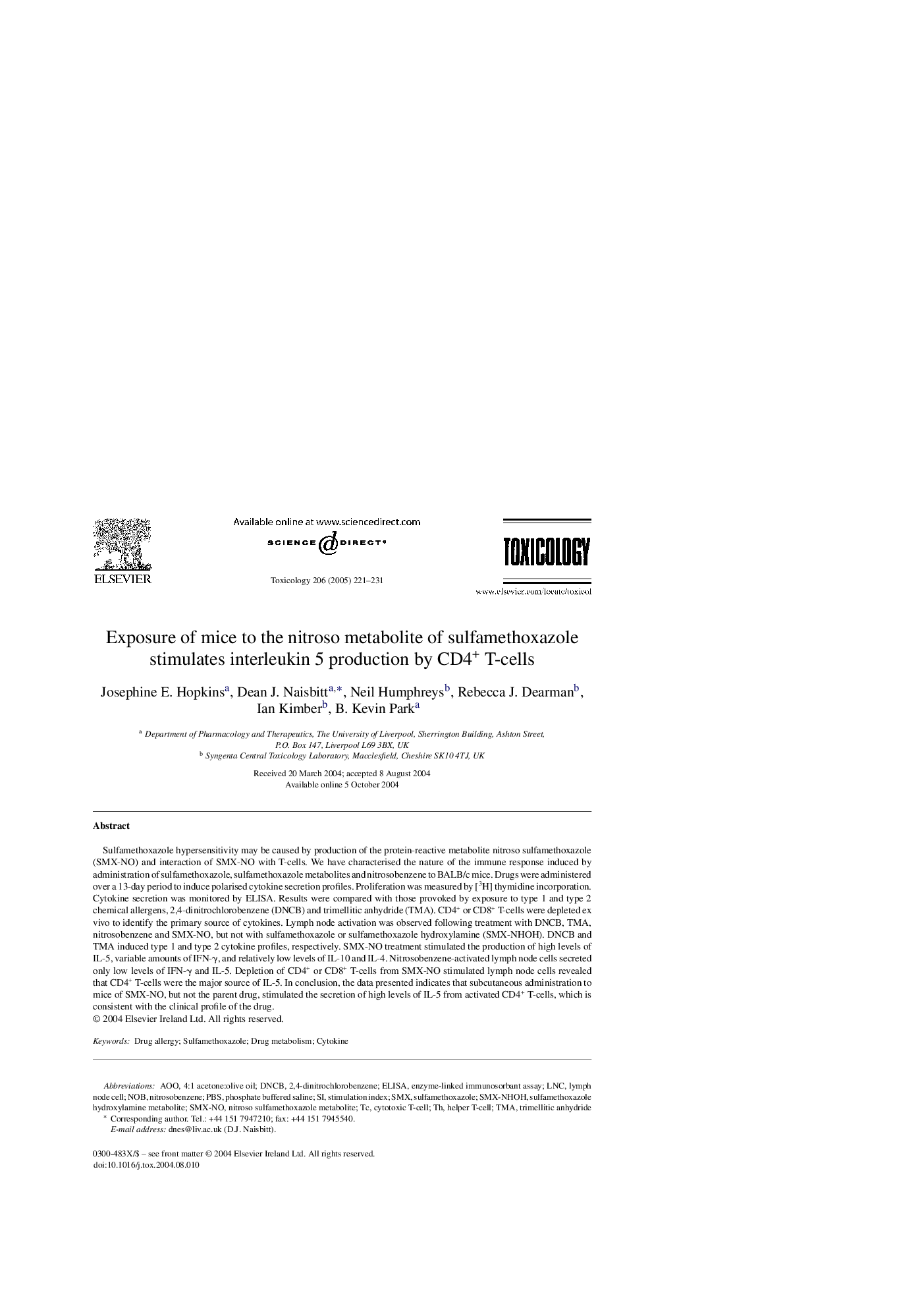| کد مقاله | کد نشریه | سال انتشار | مقاله انگلیسی | نسخه تمام متن |
|---|---|---|---|---|
| 9035182 | 1132672 | 2005 | 11 صفحه PDF | دانلود رایگان |
عنوان انگلیسی مقاله ISI
Exposure of mice to the nitroso metabolite of sulfamethoxazole stimulates interleukin 5 production by CD4+ T-cells
دانلود مقاله + سفارش ترجمه
دانلود مقاله ISI انگلیسی
رایگان برای ایرانیان
کلمات کلیدی
SMXSMX-NOcytotoxic T-cellHelper T-cellNOBAOODNCBLNCTMAPBS2,4-dinitrochlorobenzene - 2،4-dinitrochlorobenzeneenzyme-linked immunosorbant assay - آنزیم ایمونوسیوربنت تست شدهTrimellitic anhydride - آنیدرید تریلیتیELISA - تست الیزاDrug Allergy - حساسیت به داروlymph node cell - سلول گره لنفاویSulfamethoxazole - سولفامتوکسازولCytokine - سیتوکینstimulation index - شاخص تحریکPhosphate buffered saline - فسفات بافر شورDrug metabolism - متابولیسم داروNitrosobenzene - نیتروسوبنزن
موضوعات مرتبط
علوم زیستی و بیوفناوری
علوم محیط زیست
بهداشت، سم شناسی و جهش زایی
پیش نمایش صفحه اول مقاله

چکیده انگلیسی
Sulfamethoxazole hypersensitivity may be caused by production of the protein-reactive metabolite nitroso sulfamethoxazole (SMX-NO) and interaction of SMX-NO with T-cells. We have characterised the nature of the immune response induced by administration of sulfamethoxazole, sulfamethoxazole metabolites and nitrosobenzene to BALB/c mice. Drugs were administered over a 13-day period to induce polarised cytokine secretion profiles. Proliferation was measured by [3H] thymidine incorporation. Cytokine secretion was monitored by ELISA. Results were compared with those provoked by exposure to type 1 and type 2 chemical allergens, 2,4-dinitrochlorobenzene (DNCB) and trimellitic anhydride (TMA). CD4+ or CD8+ T-cells were depleted ex vivo to identify the primary source of cytokines. Lymph node activation was observed following treatment with DNCB, TMA, nitrosobenzene and SMX-NO, but not with sulfamethoxazole or sulfamethoxazole hydroxylamine (SMX-NHOH). DNCB and TMA induced type 1 and type 2 cytokine profiles, respectively. SMX-NO treatment stimulated the production of high levels of IL-5, variable amounts of IFN-γ, and relatively low levels of IL-10 and IL-4. Nitrosobenzene-activated lymph node cells secreted only low levels of IFN-γ and IL-5. Depletion of CD4+ or CD8+ T-cells from SMX-NO stimulated lymph node cells revealed that CD4+ T-cells were the major source of IL-5. In conclusion, the data presented indicates that subcutaneous administration to mice of SMX-NO, but not the parent drug, stimulated the secretion of high levels of IL-5 from activated CD4+ T-cells, which is consistent with the clinical profile of the drug.
ناشر
Database: Elsevier - ScienceDirect (ساینس دایرکت)
Journal: Toxicology - Volume 206, Issue 2, 15 January 2005, Pages 221-231
Journal: Toxicology - Volume 206, Issue 2, 15 January 2005, Pages 221-231
نویسندگان
Josephine E. Hopkins, Dean J. Naisbitt, Neil Humphreys, Rebecca J. Dearman, Ian Kimber, B. Kevin Park,